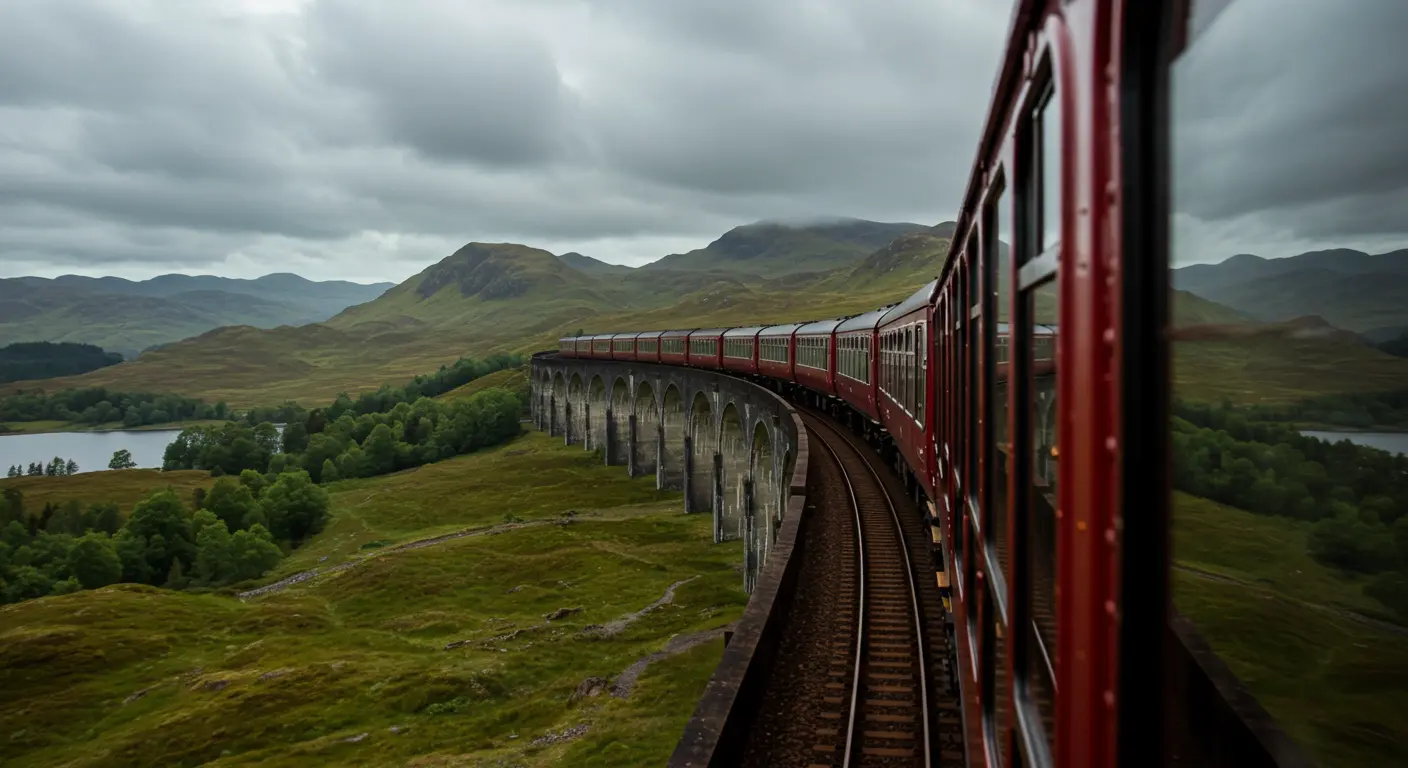Table of Contents
Your First United Kingdom Vacation: A Beginner’s Guide to an Unforgettable Trip
Picture this: you’re sipping a proper pint in a cozy London pub, the chatter warm and lively around you. Later, you’re standing in the misty Scottish Highlands, where the silence feels ancient and profound. From the hallowed halls of Oxford to the wild, dramatic coastlines of Northern Ireland, a United Kingdom vacation isn’t just one trip—it’s a tapestry of distinct cultures, histories, and landscapes woven together on a surprisingly compact island.
But that’s also the challenge, isn’t it? When you’re planning your first trip, the sheer number of options can be paralyzing. Should you focus on England? Try to cram in Scotland and Wales? How do you even begin to navigate the logistics?
Don’t worry. I’ve been there, and I’ve helped countless others plan their perfect UK adventure. This guide is designed to cut through the overwhelm. We’ll walk through the essentials—when to go, where to focus your energy, how to get around, and how to make your budget work—so you can stop stressing and start genuinely looking forward to the journey.
First Things First: Laying the Groundwork for Your UK Trip
Before you get lost in daydreams of castles and kilts, let’s tackle some practicalities. A little pre-trip planning goes a long way in ensuring a smooth experience.
When is the Absolute Best Time to Visit the UK?
This is the million-dollar question, and the honest answer is: it depends on what you’re after. The UK has a reputation for unpredictable weather, but each season has its own magic.
- Peak Season (June-August): This is the warmest (but rarely hot) period with the longest days. It’s fantastic for exploring the Scottish Highlands or the beaches of Cornwall. The downside? This is also when everyone else visits. Expect bigger crowds at major attractions like the Tower of London and Edinburgh Castle, and higher prices for flights and accommodation. School holidays run from late July through August, making it particularly busy.
- Shoulder Season (April-May & September-October): For many, this is the sweet spot. The weather is often still pleasant, the crowds have thinned, and the landscapes are stunning—think spring blossoms or autumn colours. I personally love September; you get a hint of summer’s warmth without the intense tourist crush.
- Off-Season (November-March): It will be colder, darker, and wetter. But it’s also the most atmospheric time to visit. Imagine exploring a frosty Stonehenge or enjoying the festive Christmas markets in London or Edinburgh. You’ll find the best deals on travel and have many historic sites almost to yourself. Just pack a good waterproof coat!
Budgeting Realistically: What Does a UK Trip Actually Cost?
The UK, especially London, can be expensive. But it’s entirely possible to tailor a trip to your budget.
- Accommodation: This will be your biggest expense. London prices are in a league of their own. Consider staying in boutique B&Bs (Bed and Breakfasts) outside the capital for better value and a more personal touch. Websites like Booking.com are great, but also look at local B&B associations for hidden gems.
- Food & Drink: You can easily spend a fortune on meals, but you don’t have to. Skip the tourist-trap restaurants and head to a local pub for a hearty and affordable lunch. Look for meal deals at supermarkets like Tesco or M&S for a budget-friendly picnic. And never underestimate the joy of a full English breakfast to keep you going all day.
- Attractions: Many of the UK’s national museums and art galleries, including the British Museum and the National Gallery in London, offer free admission—a huge bonus for budget travellers. For paid attractions like castles and historic homes, check online for family tickets or advanced booking discounts.
Crafting Your Perfect UK Itinerary: Where to Go
Trying to see “all of the UK” in one go is a recipe for exhaustion. My advice? Choose a region or a theme for your first trip. Depth is better than breadth here.
The Classic First-Timer’s Tour: London & Edinburgh
This two-city combo is popular for a reason. It gives you a fantastic taste of both England and Scotland.
- London (4-5 days): Dive into the iconic sights. See the Crown Jewels at the Tower of London, watch the Changing of the Guard at Buckingham Palace, and get a bird’s-eye view from the London Eye. But also, make time to wander. Get lost in the cobbled streets of Covent Garden, explore the food stalls of Borough Market, and spend an afternoon in one of the world-class free museums.
- The Journey North: Instead of flying, take the train! The East Coast Main Line from London King’s Cross to Edinburgh Waverley is one of the world’s great railway journeys. In about 4.5 hours, you’ll watch the urban landscape transform into rolling countryside and eventually the dramatic coastline of Northumberland and the Scottish Borders.
- Edinburgh (3-4 days): This city is pure drama. Hike up an extinct volcano (Arthur’s Seat) for panoramic views, explore the medieval history along the Royal Mile, and tour the majestic Edinburgh Castle perched atop its own rocky crag. If you have time, take a day trip to see the engineering marvel of the Forth Bridge or explore the scenic villages of the East Neuk of Fife.
Beyond the Cities: Embracing the UK’s Natural Beauty
If bustling cities aren’t your only focus, the UK’s countryside is where it truly shines.
- The Cotswolds, England: This is the picture-postcard England of your dreams. Think honey-coloured stone villages with names like Bourton-on-the-Water and Castle Combe, rolling green hills, and cozy pubs with roaring fires. It’s perfect for a relaxed, scenic road trip.
- The Scottish Highlands: For raw, untamed beauty, nothing beats the Highlands. Drive the North Coast 500 route, look for the Loch Ness Monster (or just enjoy the stunning scenery), and feel your spirit soar in Glencoe. It’s a place that stays with you long after you’ve left.
- Wales: Often overlooked, Wales packs a punch with its more than 600 castles, three stunning National Parks, and a fiercely unique culture. Conwy Castle is a masterpiece of medieval engineering, and Snowdonia National Park offers some of the best hiking in the UK.
Navigating Like a Pro: Transport Tips You’ll Thank Me For
Getting around the UK is generally straightforward, but a few insider tips can save you time and money.
- Trains are Your Friend: For longer distances between major cities, trains are efficient and comfortable. Book tickets in advance on the National Rail website for significant savings—purchasing on the day of travel is exponentially more expensive. Consider a BritRail Pass if you’re planning multiple long journeys.
- The London Underground (“The Tube”): It looks complicated on the map, but it’s incredibly logical. Ditch the paper tickets and get an Oyster card or simply use your contactless bank card—the system will automatically cap your daily fare so you never spend more than necessary.
- Driving: If you’re venturing into the countryside, renting a car offers ultimate freedom. Just remember: they drive on the left! Country lanes can be very narrow, so be prepared for the occasional reverse-to-a-passing-place dance with a local driver. It’s all part of the experience.
FAQs: Your United Kingdom Vacation Questions, Answered
Q: How many days do I need for a UK vacation?
A: For a first trip focusing on London and one other region (like Edinburgh or the Cotswolds), 10 days is a comfortable minimum. This gives you time to explore without feeling rushed. If you have two weeks, you can craft a much more relaxed and varied itinerary.
Q: Do I need a visa to visit the United Kingdom?
A: It depends on your nationality. Travelers from the US, Canada, Australia, and the EU can generally visit the UK for tourism for up to six months without a visa. Always check the official UK government website for the most current entry requirements based on your passport.
Q: Is the UK safe for tourists?
A: The UK is considered one of the safest travel destinations in the world. Standard precautions apply—be aware of your belongings in crowded tourist areas and on public transport to prevent pickpocketing—but violent crime against tourists is very rare.
Q: What’s the tipping culture like?
A: It’s less pressured than in North America. In pubs, you don’t tip at the bar. In restaurants, a service charge of 10-12.5% is often added to your bill. If it’s not, and you’ve had good service, a tip of 10% is customary. For taxi drivers, rounding up to the nearest pound is fine.
Q: Will I have trouble with the language?
A: English is the primary language, so you’ll have no trouble communicating. You might just pick up some charming local slang—like “cheers” for thank you, or “cuppa” for a cup of tea!
The Final Word: Your Adventure Awaits
Planning your first United Kingdom vacation might seem daunting, but it’s also part of the fun. Remember, you’re not trying to check every single box. The real magic of the UK isn’t just in its famous landmarks; it’s in the unexpected moments. It’s the conversation with a friendly local in a village pub, the quiet awe of standing in a stone circle older than the pyramids, and the simple pleasure of a perfectly brewed cup of tea.
Use this guide as your starting point, do a little research on what truly calls to you, and then book that ticket. An unforgettable adventure across England, Scotland, Wales, and Northern Ireland is waiting for you.
Ready to start planning? For official tourism information and inspiration, a great resource is the VisitBritain website.




